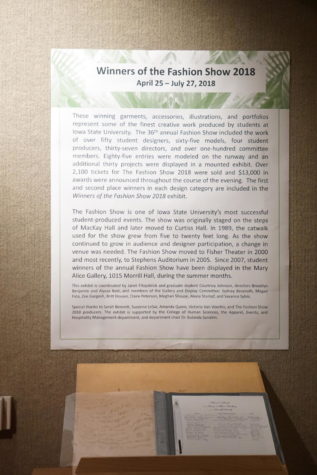Redefining “healthy”
February 4, 2015
In a world dominated by body image and healthy living, many misperceptions of what “healthy” truly exist. Healthy is something you do as a daily lifestyle, but healthy is also something you can be. When it comes to eating, Americans are far from healthy, yet “health” foods are all the rave, often leading consumers astray about what truly healthy diets actually look and taste like.
One of the most common misperceptions about healthy foods is that if a food has no nutritional value, it’s completely unhealthy and that one must consume the equivalents of rabbit food to be eating “healthy”.
Just because a food such as candy or bag of chips has minimal or no nutritional value, it doesn’t mean it’s junk food or bad for you.
The goal is to redefine “healthy” as “balance.” Balance and eating in moderation are better ways to achieve healthy living. Eating healthy proportions of nutrient-dense foods balanced with smaller proportions of less nutritious foods is a better way to eat “healthy,” rather then the all or nothing. Healthy is a lifestyle, not a military regime. Incorporating balance is what will keep one sane.
According to Joran Colby, senior in dietetics, “Healthy is not just about what you eat, but it is also about your relationship with eating. Depriving yourself of sweets or other foods is just a self-guilt trip waiting to happen.”
Another popular misconception is that foods that are low in— or void of —fat, carbs or sugar equal healthy.
According to Colby, bacon can have no carbohydrates and gummy bears can claim to be fat-free, but that doesn’t make either food “healthy” in the sense that it’s nutritious and wholesome to consume in large quantities.
Even though moderation is key, foods with minimal or no nutritional value should be outweighed in the diet by nutritious foods that will satisfy and meet nutritional needs.
Based on recent media and news articles, one would imagine that the only healthy foods available are salads. However, a salad drowned in dressing might as well call for a side of cake.
One of the biggest misconceptions to healthy eating is that “healthy” foods cannot taste good or be fun to eat. Many creative combinations of healthy foods are available for reasonable prices in the grocery stores and even in the dining centers.
Consider granola bars or homemade granola for a snack, or try making a flatbread sandwich instead of a bun for a small portion of nutritional foods.
Eating healthy is a lifestyle that can be both fun and exciting. Paying attention to nutrition labels and what’s actually in foods is important.
Also, understanding portion sizes and learning how to eat in moderation can help avoid the feeling of starvation as well as overeating, making portion control great help in eating healthy.
Wholesome snacks are a great way to balance this. But most of all, “healthy” is an attitude. Make smart food choices, but be willing to try new things or make adjustments to your diet to eat healthier and be happier with yourself. Eating healthy is easy, so redefine “healthy” for you.
















